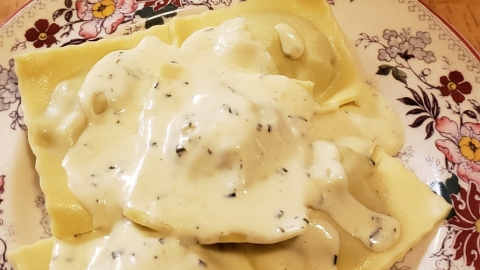Going Tiny
Three years ago, I moved home from a summer-long sabbatical in Colorado into a 12- by 20-foot cabin on five acres of woods in Ashville, NY. This piece of property has been in my family for over two decades, and I wanted to make sure I could keep it that way. After a few weeks of living here, I knew that my life would never be the same. Sure, there is a deck, a real ¾ bathroom (no outhouse with the moon cutout here) and all the trees anyone could ever need—but 240 square feet is still 240 square feet. Some of your bathrooms are probably bigger than my full-time residence.
Fast forward three years, and I’m thriving in a remodeled version of that same tiny house. Instead of being the bachelor pad it once was, there are two grown dogs and a beautiful woman living with me—and I wouldn’t change a thing.
The terms “going small” and “tiny house revolution” have buzzed through society for the last several years. People are trading in their houses full of empty space for small, well-designed, functional homes on wheels, trailers or foundations. Some say millennials just aren’t buying houses, but I don’t think my generation is the first to ponder, “Why do we need so much junk?”
I have learned that living small provides endless experiences, situations, challenges and compromises that a house with more than one room never could. For instance, your bed has to double as your couch, or your dog crate also serves as a catch-all table for things that have yet to find a permanent home. Two hundred feet means that at least one dog is always touching me, sometimes two, and nearly all of my shelf space is used for books.
But I’m not complaining about these circumstances, because my life wouldn’t be quite so unique without them. Going small has also led to building a strong, open and communicative relationship with my fiancé and never, ever, going to bed angry. The smell of fresh coffee, brewed on the stove, doesn’t have to waft far to wake you up on a rainy Sunday morning. Coming in from the snow when our tiny Salamander woodstove is burning eight-inch logs is an experience beyond compare. It’s as though that all-encompassing warmth transports me back to another time and place. Sure, this small space feels tight at times in the summer and extra cozy in the winter, but I’ve never felt claustrophobic or trapped here. Kortney and I know that we don’t always want to live this tiny, but that we will never live much bigger.
I could rave about our tiny house for pages, but the most important skill I’ve gained from living tiny is in the realm of cooking. For the last three years, I’ve tried to advance my culinary abilities without many of the tools many at-home chefs consider “essentials.” I don’t have a working oven to roast a chicken, bake bread or simply throw in a frozen pizza late at night. We don’t have a microwave to heat up leftovers or a bag of that delicious movie theater butter popcorn. I toast my bread in a pan and warm up soup on a cast-iron wood stove. Balancing prep space with eating space—while still finding a spot to set my beer—takes practice.
Cooking in a tiny home means learning how to manage timing and counterspace exceptionally well. Foil is my most useful cooking utensil and I’ve learned that it is far easier to clean as I go. In this tiny kitchen, I’ve managed to make homemade lamb-stuffed ravioli, venison on weck sandwiches and an array of homemade mustards. Yet, when the food is done and we sit down at our tiny table with endless uses, nothing else matters except the food in front of us, the wine we pair it with and the conversation we share.









